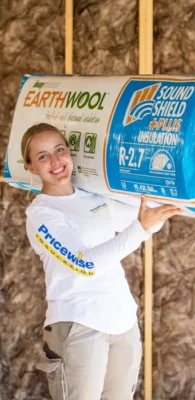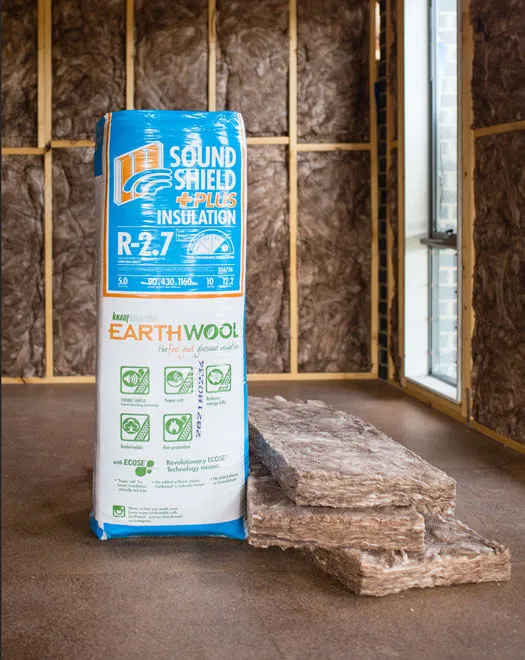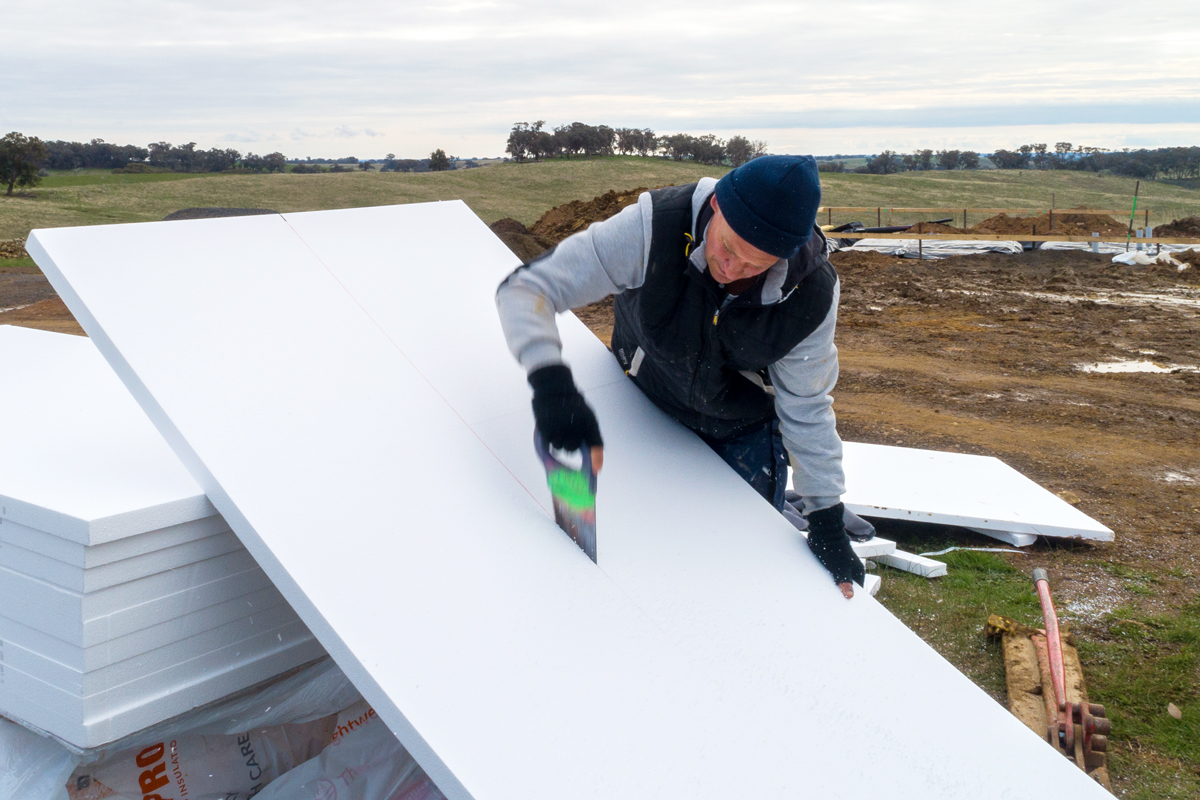Expanded polystyrene foam board insulation, otherwise known as EPS insulation or styrofoam, is a product that offers a great many benefits to both the professional builder and home DIYer. Used across commercial and residential construction industries, EPS foam insulation provides affordable, long-lasting and effective insulation for walls, roofs, floors and under slabs. Expanded polystyrene insulation can be used during construction or retrofitted to a house and does not require specialist equipment or qualifications to handle. It is also considered a relatively environmentally friendly insulation option, with low toxicity and minimal safety risk.
In this guide, we will walk you through exactly what EPS is, how it’s made, what it can be used for, and the many benefits of its application. We’ll also explain the differences between EPS and XPS (Extruded Polystyrene) insulation.
TABLE OF CONTENTS
- What is Expanded Polystyrene (EPS)?
- How is EPS Made?
- What are the Benefits of EPS?
- Thermal Efficiency and Energy Savings
- Cost-Effectiveness of EPS
- Versatility in Application
- Sustainable and Eco-Friendly
- Safety and Health Benefits
- The Variety and Uses of EPS Foam
- What is the Difference Between EPS vs XPS?
What is Expanded Polystyrene (EPS)?
EPS is an insulation material made by ‘blowing up’ polystyrene beads to form a structure comprising 2% plastic and 98% trapped air. Expanded polystyrene can be moulded into flat boards or specific shapes that can be used as insulation for a variety of purposes. Some EPS products are infused with additives such as fire retardants or pest deterrents during the manufacturing process. A plastic or foil film may also be adhered to the product for enhanced rigidity, to increase thermal insulation or to act as a moisture barrier.
There are EPS products available for a wide variety of building purposes,
including wall, floor and roof insulation, as well as for underslab insulation.
How is EPS Made?
EPS foam insulation is a petroleum-based product that starts its life in the form of tiny polystyrene beads (polystyrene granulate) about the size of grains of salt. These granules are expanded using the foaming agent pentane. This foaming process occurs at a high temperature, which causes the pentane to evaporate.
The expanded beads are then pressed together in a mould to form blocks or custom shapes. These can then be cut with hot wires to form sheets or to alter their shape as needed. As part of this manufacturing process, EPS may be imbued with additives, such as flame retardant or pest deterrent, to give the product additional properties. The sheets may also go through another machine that adds a layer of plastic film or foil to the outside, to increase thermal or moisture resistance, or to add rigidity.
What are the Benefits of EPS?
Expanded polystyrene foam board insulation is a product that offers a great many benefits. Its key advantages include its lightweight, thermal efficiency, cost-effectiveness, versatility, environmental credentials and safety. Let’s look at each of these benefits in detail.
Thermal Efficiency and Energy Savings
EPS foam insulation is made up of 98% air. Air is a poor transfer conductor – which means that it does not transfer heat well. As such, EPS foam makes for a good insulator against heat and cold. The energy efficiency of insulation products is measured with what is called its ‘R-value’. The higher the R-value, the better it acts as an insulator and the addition of a plastic or foil layer can heighten this. The overall R-value of an EPS product will be higher for thicker boards and lower for thinner ones.
EPS insulation can be used in the roof and walls of a house, and under the floor or concrete slab, to reduce heat transfer from outside. The house will be kept cooler in summer and warmer in winter. EPS insulation also reduces thermal transfer from inside to outside the home. This means the house will better retain the cosy warmth of indoor heating or the coolness of air conditioning. Overall, using EPS insulation will contribute to significant energy savings and make for a more comfortable living environment.
Cost-Effectiveness of EPS
Expanded polystyrene foam insulation can be a more affordable product than many alternatives, as its relatively low cost means that overall, you can buy a higher R-value for your dollar. While there are some other insulation options with higher R-values, EPS can be a suitable budget-conscious choice where the R-value does not need to be extra-high, or where a thicker board with higher R-value is acceptable.
In addition, EPS is relatively easy to install. Its light weight means that no heavy equipment is required, and it does not require specialist skills or materials to install. It is also available in a variety of shapes and sizes, and can easily be cut to size. All this means your avid DIYer can safely install EPS.
In addition, rigid EPS insulation sheets, such as Foilboard, are long-lasting and handle heavy loads without deforming or sagging. EPS also maintains its insulation properties over time. As such, EPS foam insulation is a product that offers low long-term replacement and maintenance costs.
Versatility in Application
There are many expanded polystyrene uses – a highly adaptable product that can serve multiple functions across various industries. Expanded polystyrene foam can be moulded to shape to suit various purposes. It can be customised by introducing additives in the manufacturing process, such as fire retardants, pest deterrents and colourants. Plastic or foil film can further tailor the product.
As an insulation material, EPS is used in residential, commercial and industrial construction projects. It can be fitted during the construction process, such as under concrete slabs and within external walls. It can also be retrofitted by homeowners in accessible spaces such as interior walls, ceilings and garages. EPS insulation products come in a variety of thicknesses to suit these various uses.
Sustainable and Eco-Friendly
In its production, EPS has what is considered a low carbon impact. It has a relatively clean manufacturing process, which requires minimal energy and water inputs, with no production waste. Expanded polystyrene is made from the organic elements of carbon, hydrogen and oxygen. It is expanded by the blowing agent pentane, which then ‘burns off’ during the heating process. Not only does pentane offer a lower-carbon production process than comparable insulation materials such as XPS (Extruded Polystyrene), but it does not hang around to slowly release over time.
Furthermore, EPS is free from chlorofluorocarbons (CFC) and hydrochlorofluorocarbons (HCFC), which are considered destructive to the Earth’s ozone layer. Expanded polystyrene foam is 100% recyclable. It can be chopped back down, reprocessed and moulded into new products. What is more, its light weight means less fuel and greenhouse gas emissions in its transport.
Safety and Health Benefits
EPS is considered a non-toxic material that does not release harmful chemicals into the surrounding environment. In a fire situation, the level of toxicity from burning is no greater than for timber or other frequently used building materials. EPS is non-allergenic, does not rot and is mould-resistant, meaning that its use will not cause an unhealthy environment. Its low weight also means that it is safe and easy to handle, making installation low risk for the workers using it. No special equipment or safety gear is recommended for removal. Overall, EPS foam insulation offers a safe, low-risk insulation option during the installation phase, for the many years it will remain in the building, and at any time of removal.
The Variety and Uses of EPS Foam
The affordability and ease of installation make expanded polystyrene foam board insulation suitable for both homeowners and professionals alike. It can be used both in the construction phase of a building project, and also retrofitted to existing buildings.
EPS insulation products exist for a variety of uses, including the following:
Ceilings – Suitable for uses that include commercial suspended ceilings and cathedral or skillion roofs.
Exterior and interior wall insulation – Including brick veneer walls, cladded walls, double brick cavity walls, blockwork and concrete walls. It is not the most vapour permeable product on the market, so make sure that suitable for your project
Floors – Retrofitted or in new builds, installed under floors using saddles or Flexifast clips.
Garages and sheds – Lining the inside of the garage and shed walls and panel-lift garage doors.
Underslab insulation – Forming a thermal barrier between the ground and concrete slab.
The versatility of EPS products is further enhanced by the ability to add an external plastic or foil layer. This can increase the R-value of the product for greater thermal insulation, or create a vapour barrier, thus reducing the amount of moisture that can pass through.
What is the Difference Between EPS vs XPS?
Expanded polystyrene foam (EPS) is not the only form of polystyrene insulation on the market – there is also Extruded Polystyrene (XPS) insulation. Both products are made from polystyrene crystals or beads, but the methods of manufacture are different, as are their resulting properties.
The chief differences between EPS and XPS are summarised as follows:
| Expanded Polystyrene (EPS) Foam Insulation |
Extruded Polystyrene (XPS) Insulation |
| Created by blowing up polystyrene beads using pentane, fusing beads together into a mould with heat and pressure, and then cutting to shape using hot wires. |
Made by blending polystyrene crystals, a gas blowing agent and other additives in an extruding machine. This forms a thick, melted liquid, which is expanded, shaped, cooled and trimmed. |
| Has an open cell matrix structure, where each polystyrene bead forms a closed cell, but with open spaces between each of these cells. |
Has a closed cell structure with a smooth skin on top and bottom of the board. |
| Has a lower R-value than XPS for the same thickness or product. However, it does not significantly lose its insulation effectiveness (R-value) over time. |
Has a higher initial R-value than EPS for the same thickness product but loses some of its insulation effectiveness over time. |
| It is a lower-cost product than XPS, offering a higher R-value per dollar, albeit at a greater thickness than the equivalent R-value in XPS. |
Offers very low moisture permeability. It can be a suitable insulation choice for wet areas where it can help form a barrier that does not allow moisture to pass through to other spaces. |
| It is slightly more moisture-permeable than XPS, allowing a small amount of moisture to pass through. The addition of a moisture barrier layer may counteract this. |
Has a higher compressive strength than EPS. |
|
It may be manufactured using hydrochlorofluorocarbon (HCFC) blowing agents, which are considered detrimental to the ozone layer. |
Elevate Your Insulation Game with Pricewise Insulation
Expanded polystyrene foam board insulation is a great insulation product with applications across commercial, residential and industrial building industries. Its key benefits include good thermal efficiency, cost-effectiveness and solid environmental and safety credentials. Its ease of use and light weight also make it a popular choice for DIY projects.
Pricewise Insulation offers high-quality EPS insulation products for use in building roofs, ceilings, floors, external and internal walls and under slabs. These include Foilboard Insulation Green Rigid Panels, Slabmate Underslab Insulation by Foilboard, and Slabmate Pro Underslab Insulation by Foilboard.
Pricewise Insulation is Australia’s biggest online store for residential and commercial insulation. Shop our products online and have insulation delivered to you, or visit our warehouses in Sydney or Melbourne.
Got a question? Contact us, and we’ll be happy to help!



